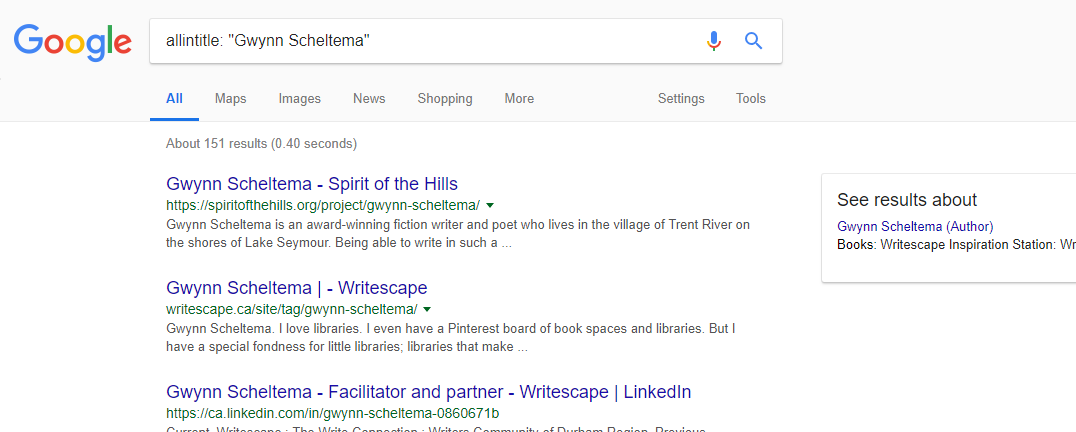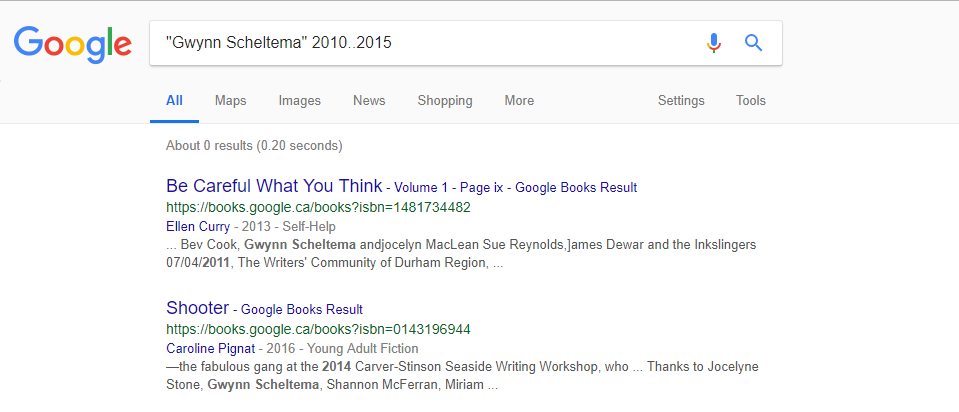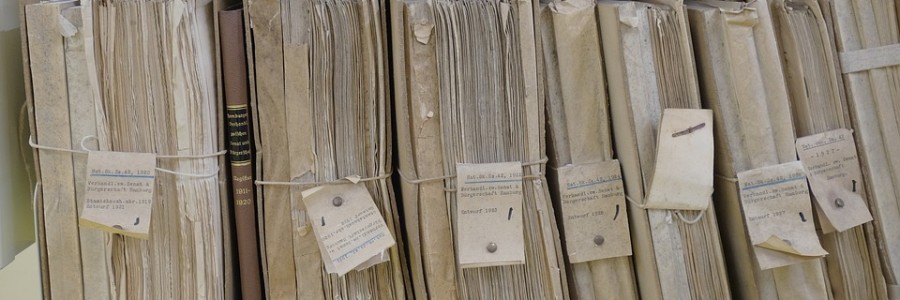
A trunk of old letters. A pile of postcards tied with string. A paper copy of the will of an ancestor. All can be fantastic primary research or a font of ideas for stories—if you could only read them!
Reading old handwriting on historic documents can be difficult. Just as in modern times, penmanship skills were often poor, or more likely, the script, language and abbreviations used are unfamiliar.
Here are ten tips to help with old documents written in English:
1. Create a clear working copy
To make things easier for you and to minimize any damage to the original document, scan or photograph the original to make a working copy. With all the digital advances at our disposal these days, adjust brightness, deepen colour for faded ink, and zoom in.
2. Identify the historical period.
A quick look at the array of fonts available shows how different the same words can look when written in different styles. Different periods in history had distinct styles and if you can pinpoint the century, you can then focus on that style. You’ll come across old conventions like the “long s” or the old Anglo-Saxon letter thorn, “þ”. pronounced “th” which became a “y” and shows up in words like Ye (The).Below is a visual sampling of scripts used from the 16th, 17th, 18th and 19th centuries (photos from www.ancestry.com/) For even earlier scripts the University of Nottingham has a wonderful section on reading old manuscripts.




3. Print an alphabet sheet
Once you’ve identified the right century, (see tip #2) Google image search and print a reference sheet of the alphabet in typical scripts of the period. “19th century handwriting alphabet” produced this result:

4. Do an initial read through
Read through the whole document (out loud if possible) to get a “feel” for the document in its entirety. Even if you stumble over more words than you decipher, your eyes and ears will start to get familiar with the handwriting, and you will begin to recognize some words. Do it again. And again.
5. Think Phonetically
Spellings, punctuation and capitalizations weren’t standardized until well into the 19th century. Many people couldn’t read or write and scribes or officials wrote what they heard. People’s names and place names in particular can have a wide variety of spellings, even on the same page. Patterns of speech and local dialects would have affected what scribes heard. So, for example, if it’s a Scottish document, “William” may be written “Weelum”; “hundred” may be written “hunnert” and “more” might be “mair”. That’s where reading aloud helps too. (see tip #4)
6. Be aware of abbreviations, short forms and jargon
Every profession and era has its own abbreviations, short forms and jargon. A letter in your grandmother’s time might have said “Thank you for your letter of the 14th inst.”(this month) An email message today might end with “TTYL” or “Thx”. Take time to research the meaning of any unknown abbreviations you come across. A few examples:
- et al = and others
- wit = witness
- do = same
- w/o = wife of
7. Name shortforms and nicknames
The trend in prior times to use nicknames and to abbreviate names when writing them, while annoying, can be helpful because the short forms are easily recognizable and having deciphered them, it will help with further identification of letters.
Here are two resources to help you:
8. Start with what you can read.
Be a word detective. Remember the movie The Imitation Game about the enigma machine? They broke the code when they realized that the German messages always contained a salute to Hitler, so that gave them 6 deciphered letters to begin with. Use the same idea of beginning with what you can decipher and building on it.
So, if you are reading a will, look for words or phrases that you would expect to be there: “last will and testament” “bequeath” “my wife” my eldest son” “property”. Check the address on letters for familiar place names; look at salutations and sign offs. Words like days of the week, months and seasons or even simple ones like “the” and “and” give you a starting point to see how the writer formed lower case vowels or certain capital letters. Then compare them to your alphabet charts (see tip #3) and other words in the document.

9. Fill in the blanks
Write out the text leaving placeholder blanks for words you can’t read. Then in each blank space put dashes for the number of letters in the unknown words. (Example: “_ _ _ _ _ _”) Next, based on your comparison of known words and letter formations in the document and your reference style sheets, work on filling in partial words based purely on the formation of letters. (Example: “_ _ _ ish”) A hint to help here is knowing that where a letter begins the ink is often thicker and the direction it thins is the direction it was formed. Work on long words first, as having many letters gives more clues to completing the word.
10. Get help from social media.
Genealogy groups on Facebook can be most helpful with reading old scripts. Post a good quality image of the section you want help with and put your incomplete transcript in the message section (see tip #9). Note that having an image of a good chunk to work with is more effective than posting a picture of just a few words, because, like you, your helpers will need context. Don’t forget to say please and thank you, and to limit your ask and expectations. Asking for translation of a highlighted sentence with three important missing words is more likely to get assistance than asking for a full-page translation.










 That means that October, affectionately known as “Preptober” is a month for getting all your ducks in a row, so you’re ready to actually write on November 1. Below are 10 ways to get ready to write, for NaNoWriMo or indeed for any new novel project.
That means that October, affectionately known as “Preptober” is a month for getting all your ducks in a row, so you’re ready to actually write on November 1. Below are 10 ways to get ready to write, for NaNoWriMo or indeed for any new novel project. Start with
Start with  Brainstorm story ideas. Outline potential plots. Ask yourself the simple but effective “What if?”, or use the base of all ancient myths and tales: the three act structure. If you know how you want your story to end, consider working backwards too. You might want to check out these tried and true variants of the three act structure too.
Brainstorm story ideas. Outline potential plots. Ask yourself the simple but effective “What if?”, or use the base of all ancient myths and tales: the three act structure. If you know how you want your story to end, consider working backwards too. You might want to check out these tried and true variants of the three act structure too. Define your story world: place and time. This could be as simple as “Russia pre 1917 revolution” or “Haliburton 1956”, or as complex as a new fantasy world or imagined planet. Or it might be a mix, say a fictitious town called Halbury based on Haliburton. Setting is important to ground your story and your readers. The more complex your setting, the more up-front “
Define your story world: place and time. This could be as simple as “Russia pre 1917 revolution” or “Haliburton 1956”, or as complex as a new fantasy world or imagined planet. Or it might be a mix, say a fictitious town called Halbury based on Haliburton. Setting is important to ground your story and your readers. The more complex your setting, the more up-front “











 Catalogues and Databases
Catalogues and Databases Finding Aids:
Finding Aids: Archival Staff
Archival Staff Policies differ archive to archive, but here are possibilities for access if you can’t visit in person.
Policies differ archive to archive, but here are possibilities for access if you can’t visit in person. While I’m not suggesting you stalk big names in your field of interest, we often meet experts (and other novelists) at book readings, symposiums, conferences or casually at other events. Asking about their research and the collections they may have used is a good conversation opener, and you might just learn something. If you are interviewing them, make it one of your questions.
While I’m not suggesting you stalk big names in your field of interest, we often meet experts (and other novelists) at book readings, symposiums, conferences or casually at other events. Asking about their research and the collections they may have used is a good conversation opener, and you might just learn something. If you are interviewing them, make it one of your questions.





 I live in a tiny granny suite in the southwestern corner of BC, where space is at a premium. I can no longer keep physical archives, and I didn’t have enough empty file storage space on my existing computer. My archive still had to exist in a form that was
I live in a tiny granny suite in the southwestern corner of BC, where space is at a premium. I can no longer keep physical archives, and I didn’t have enough empty file storage space on my existing computer. My archive still had to exist in a form that was A quick poke through Staples and London Drugs websites unearthed the perfect solution: a hefty 2 terabyte Passport drive that plugs in to a USB port on my computer, and holds LOTS of files. All I needed was a sale and less than $100 to end my space challenge.
A quick poke through Staples and London Drugs websites unearthed the perfect solution: a hefty 2 terabyte Passport drive that plugs in to a USB port on my computer, and holds LOTS of files. All I needed was a sale and less than $100 to end my space challenge. Consistent folder names across the various storage, email, and social media platforms make retrieval much easier. Folder structures work best for me if they are named in the ways that I think, so I created my own. A couple of hours saw my folders labelled and matched on every platform.
Consistent folder names across the various storage, email, and social media platforms make retrieval much easier. Folder structures work best for me if they are named in the ways that I think, so I created my own. A couple of hours saw my folders labelled and matched on every platform. Emails (in individual folders OR across the entire inbox and all sub-folders) are searchable by subject line, content, keyword, date and sender and by some or all of the above in every mail program out there. You just have to learn how. Every email program is slightly different, and not everyone uses my beloved Outlook. For Gmail, I read the search
Emails (in individual folders OR across the entire inbox and all sub-folders) are searchable by subject line, content, keyword, date and sender and by some or all of the above in every mail program out there. You just have to learn how. Every email program is slightly different, and not everyone uses my beloved Outlook. For Gmail, I read the search  Leah Murray operates
Leah Murray operates 
















